Yeah, sorry, I really haven’t been posting much at all, and while I’m aware of it and trying, there really hasn’t been a lot to say. Photography has dropped down to almost nil, and I’ve been busy with countless projects (one of which, at least, will eventually be evident,) and also recovering from some walking difficulty which makes me understandably reluctant to go out looking for photo subjects. On top of that, the cold weather plays havoc with my sinuses and it can be literally painful to be outside at times. Things will pick up at some point, I promise, but for now there might not be a lot to see here.
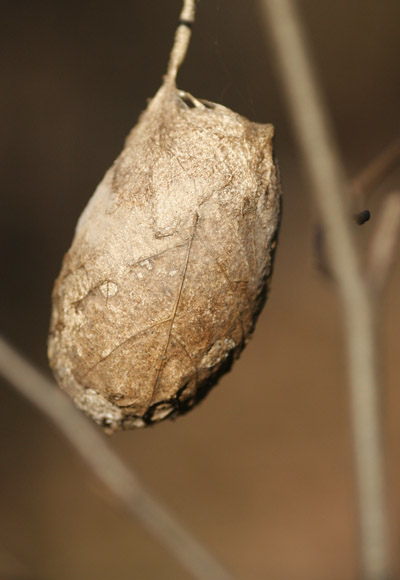 On the last photo outing a couple of weeks back, I didn’t get a whole lot of photos of interest, but did run across this large cocoon, approximately five centimeters in length and three in girth. Due to the appearance and size, I’m leaning towards this being the work of a polyphemus moth (Antheraea polyphemus,) but if questioned I will categorically deny any and all certainty. I could simply have collected it and kept an eye on it come springtime to see what hatched, but I tend to leave things where I find them unless I have a specific project or need in mind. If you’d like to see what an adult looks like, I have photos of one here, but I’m kind enough to warn you (it’s nearly christmas, after all, and I’m still hoping to get a Porsche) that they don’t show until after you scroll past a wickedly large and, uh, aesthetically-challenged spider.
On the last photo outing a couple of weeks back, I didn’t get a whole lot of photos of interest, but did run across this large cocoon, approximately five centimeters in length and three in girth. Due to the appearance and size, I’m leaning towards this being the work of a polyphemus moth (Antheraea polyphemus,) but if questioned I will categorically deny any and all certainty. I could simply have collected it and kept an eye on it come springtime to see what hatched, but I tend to leave things where I find them unless I have a specific project or need in mind. If you’d like to see what an adult looks like, I have photos of one here, but I’m kind enough to warn you (it’s nearly christmas, after all, and I’m still hoping to get a Porsche) that they don’t show until after you scroll past a wickedly large and, uh, aesthetically-challenged spider.
However, we’ll go in a bit closer to this cocoon to see the detail, which came up quite well at this particular light angle and revealed the actual construction material; from normal viewing distance, the cocoon appeared to be fairly uniform in color and texture, easy to believe it was entirely silk. Going in close with the Mamiya macro lens again (rather than, for instance, backing off a couple of meters to use a 150-600mm lens, which would be just silly,) we can see the true nature of the materials at hand. And going still closer, but showing a tighter crop at higher resolution, we get some almost-tactile textures from the shot:

What I like about this is how the leaf veins can almost put me in mind of, you know, veins that carry blood, which changes the impression from, “oh, yeah, leaves,” to, “oh god it’s got veins!” Leaf veins are fine, but fleshy veins are creepy, you know? Okay, never mind.
But if you want a challenge, so if you can discern when one leaf stops and another begins.
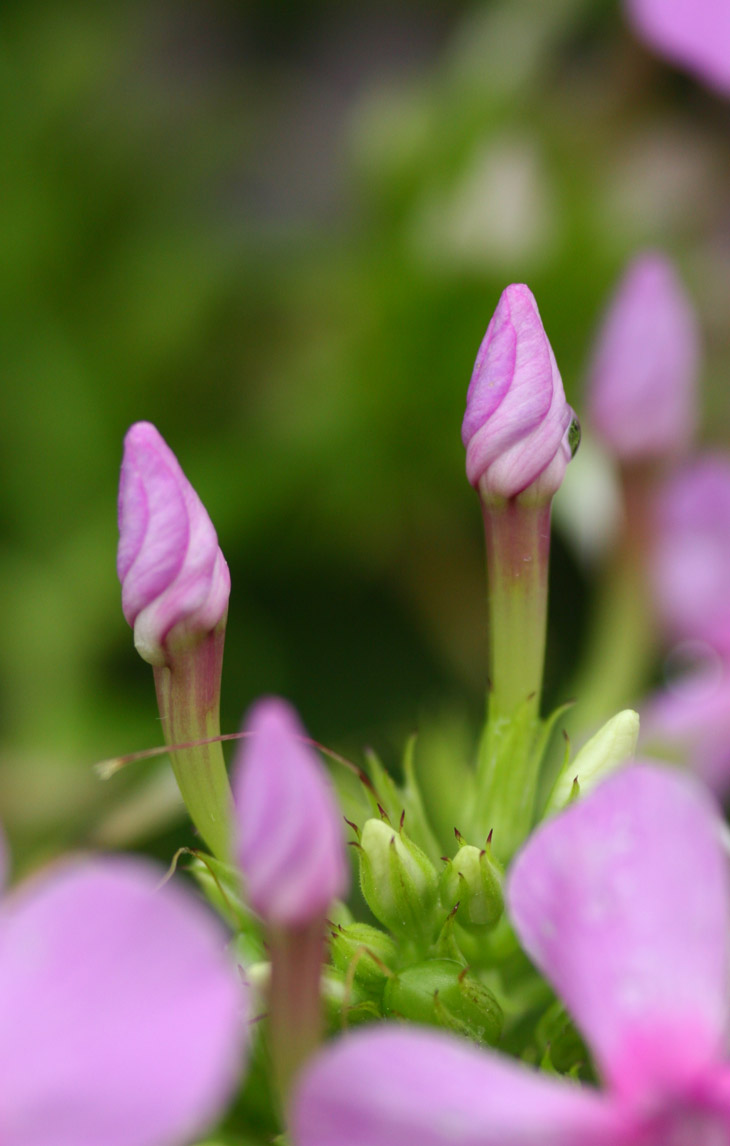
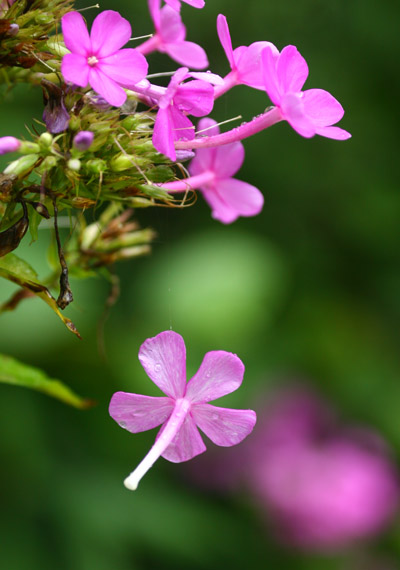 But to just get something up here, we’ll go back earlier in the year (and perhaps further) for a few images that I never did post when I got them. There’s no theme here, or much reasoning behind guilt and obligation to actually maintain content and remind people that yes, the blog is still active.
But to just get something up here, we’ll go back earlier in the year (and perhaps further) for a few images that I never did post when I got them. There’s no theme here, or much reasoning behind guilt and obligation to actually maintain content and remind people that yes, the blog is still active.
Above, buds of a variety of phlox showed off their lovely spiraled nature, offset with a raindrop, while I was touring UNC Botanical Gardens again, mostly chasing anoles. Raindrops in flower gardens are a nice opportunity for extreme macro work, in that they can act as lenses and, if you live a clean life and get very lucky, you can get miniature images of the flowers in the background through them. It takes nice round drops (so, generally hanging,) and the right position of a blossom in the background, so it’s a lot trickier to arrange than it might seem at first, and did not come about this time around. I have more than a mild suspicion that, of the many times that I’ve seen examples, more than a few were artfully staged, the drops (and possibly even the flowers themselves) placed there by opportunistic photographers.
Not too far away on another plant, a conspicuously-dangling blossom alerted me to the possible presence of spiders, which you should know by now are routine subjects of mine. Some varieties of white crab spider can develop accent patches of color very close to these flowers and so I was keeping my eyes open, but it was not to be on this trip. Which isn’t to say that I’ve never seen them.
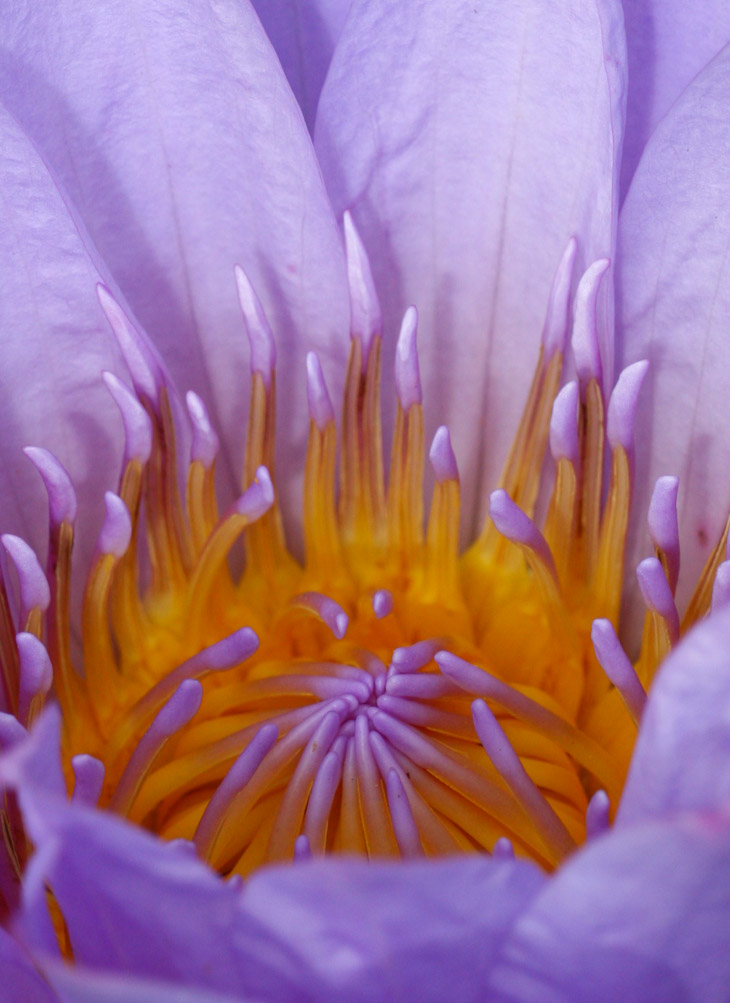
This one was taken at the same time as these, but didn’t fit my purposes then, so it appears now. This is a tighter crop of the center from the original, because I liked that detail and the contrasting colors. This is purely natural light, by the way, from a slightly hazy day, with saturation and contrast boosted slightly to compensate for the lack thereof from the light, a typical setting for such conditions.

I’ve had this one sitting in the blog images folder since this post, because it was too similar to others therein, but I liked it for the lighting and position and knew it would reappear someday – today’s the day! I’ll let you provide your own impressions of the image and what it says to you, and merely point out a curious detail: we’re seeing this cecropia moth caterpillar (Hyalophora cecropia) from the hind end – you can see the array of legs clutching the branch extending towards us at the bottom of the image. My subject was reacting to the perceived threat of a nature photographer (you know how we are) and curled up protectively, so I had to reposition myself to get the face shot. There’s just something about the deep shadows and the near-translucent skin…
And to close, we go back to last year, from a trip to Jekyll Island, Georgia. Out doing sunrise on the beach, I came across a couple of deceased sharks, just slightly longer than my foot; one of them bore a moderately-sized wound, but it was around the gills and appeared to be post-mortem to my untrained eye. I later found out that the inlet that the beach borders is a breeding ground for sharks, apparently because of its conditions, though what exactly those might be I cannot say (me and the sharks have a non-disclosure agreement.) I didn’t pass on the opportunity to do a couple of fartsy, supposedly poignant shots though, using the pristine sands scoured smooth by high tide and so-far-untouched by tourists. Except lone nature photographers. You can decide if you like it or not (the pic, I mean, not nature photographers or the habits thereof.)
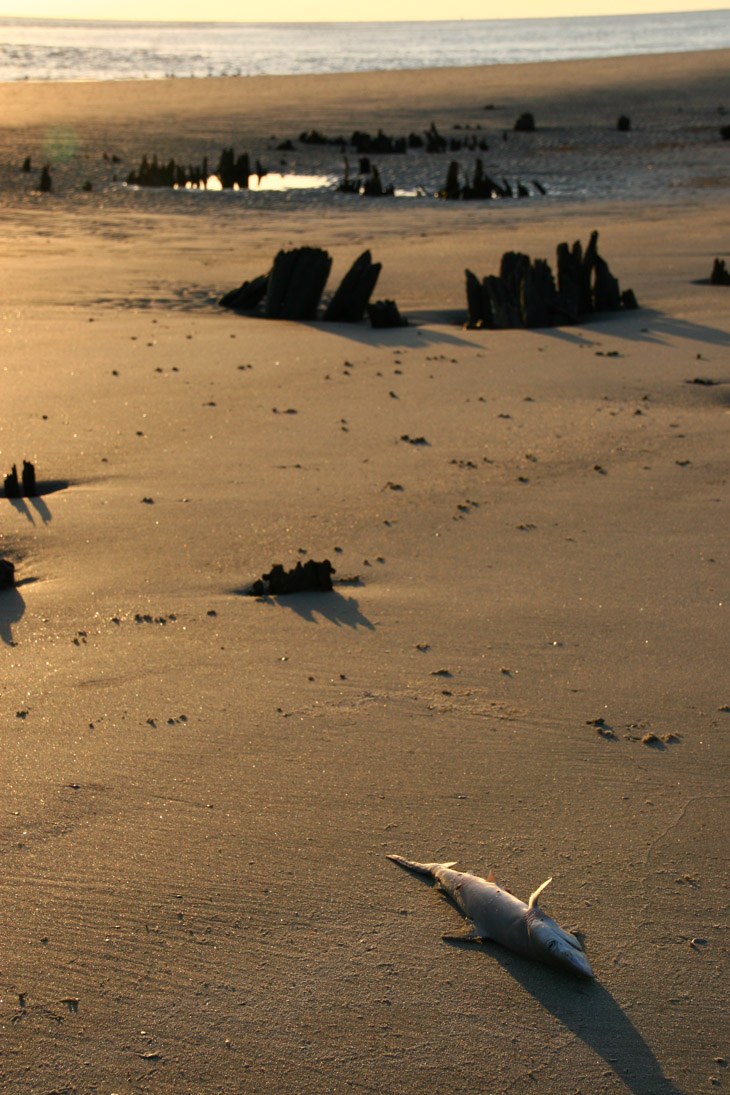
Don’t give up on me yet – I’ve got more stuff in the works.



















































